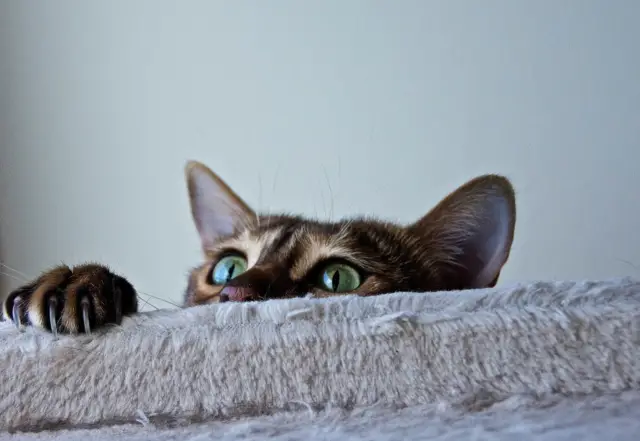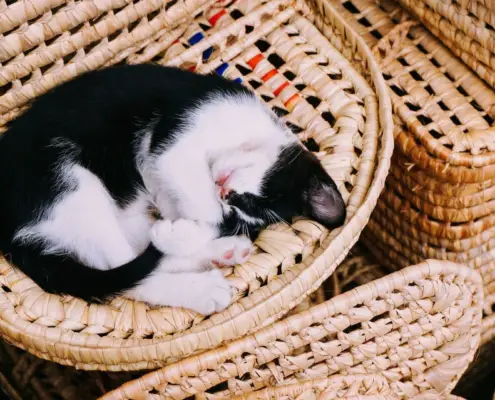
Cats have always held a mysterious allure, captivating humans with their grace and independence. One aspect of their enigmatic nature lies in their physiology, specifically the common misconception that cats possess extra organs. In this article, we will delve into the fascinating world of feline physiology, separating fact from fiction and debunking the myth of extra organs in cats. By understanding the unique anatomy and organs of a cat’s body, we can gain a deeper appreciation for these remarkable creatures and better care for their health and well-being.
Common misconceptions about cats and extra organs
There is a widely held belief that cats have extra organs that grant them supernatural abilities. Tales of cats possessing secret organs that endow them with mystical powers have been perpetuated for centuries. However, it is essential to separate reality from folklore when exploring feline physiology. Cats are indeed extraordinary animals, but their anatomy is not fundamentally different from other mammals. By dispelling these misconceptions, we can gain a more accurate understanding of the true marvels of a cat’s physiology.
Do cats have extra organs? The truth revealed
Contrary to popular belief, cats do not possess extra organs. Like all mammals, cats have a standard set of organs that serve essential functions in their bodies. While cats may be unique in some aspects, such as their agility and nocturnal nature, their internal anatomy is not drastically different from other animals. The notion of extra organs in cats is a myth that stems from ancient folklore and superstitions. To truly understand feline physiology, we must explore the intricate details of their anatomy and debunk these misconceptions once and for all.
Understanding the unique anatomy of cats
To comprehend the physiology of cats, it is crucial to first understand their unique anatomy. Cats have a relatively compact body, equipped with a muscular and flexible spine that enables them to pounce and leap with astounding precision. Their skeletal structure, consisting of 244 bones, provides the framework that supports their agile movements. Additionally, cats possess retractable claws, a distinctive feature that helps them maintain balance and catch prey. By appreciating the remarkable design of a cat’s body, we can begin to unravel the mysteries of their physiology.
Exploring the organs of a cat’s body
Just like humans and other mammals, cats have a set of vital organs that enable them to function optimally. The heart, lungs, liver, kidneys, and digestive system are all present in a cat’s body, allowing them to perform essential bodily functions. The heart pumps oxygen-rich blood throughout the body, while the lungs enable oxygen exchange. The liver aids in digestion and detoxification, while the kidneys filter waste products from the blood. By examining the organs of a cat’s body, we can appreciate the complexity of their physiology and the role each organ plays in their overall well-being.
Debunking popular myths about cat physiology
Over the years, various myths and misconceptions have arisen surrounding the physiology of cats. One such myth suggests that cats possess a sixth sense due to an extra organ. While cats do possess remarkable sensory abilities, such as keen hearing and night vision, these are not the result of extra organs. Instead, their acute senses are a product of their evolutionary adaptations and specialized anatomical structures. By dispelling these myths, we can gain a more accurate understanding of the true wonders of a cat’s physiology.
The role of organs in a cat’s overall health and well-being
Each organ in a cat’s body plays a vital role in their overall health and well-being. The heart, for example, ensures that oxygen and nutrients are delivered to every cell, while the lungs facilitate respiration. The liver metabolizes and detoxifies substances, safeguarding the body against harmful toxins. The kidneys filter waste products from the blood, maintaining proper hydration and electrolyte balance. Understanding the importance of these organs allows us to appreciate the delicate balance required for a cat to maintain optimal health.
Common health issues related to cat organs
As with any living creature, cats are susceptible to various health issues related to their organs. Heart disease, respiratory infections, liver disease, and kidney problems are among the most common ailments affecting cats. Regular veterinary check-ups and a balanced diet can help prevent and manage these conditions. By staying informed about the potential health issues that can arise, cat owners can take proactive steps to ensure the well-being of their feline companions.
Caring for a cat’s organs: Tips for maintaining feline health
To maintain the health of a cat’s organs, several factors must be considered. A balanced and nutritious diet is crucial for providing the essential nutrients that support organ function. Regular exercise helps keep a cat’s body fit and aids in the proper functioning of their organs. Good oral hygiene is also essential, as dental issues can affect overall health. Additionally, routine veterinary check-ups and vaccinations are vital for early detection and prevention of organ-related issues. By implementing these practices, cat owners can provide the best possible care for their feline friends.
Appreciating the complexity of cats’ physiology
In conclusion, the myth of extra organs in cats has been debunked, and the true marvels of feline physiology have been revealed. Cats possess a unique anatomy that enables them to exhibit incredible agility and grace. Their internal organs, though not fundamentally different from other mammals, play a vital role in their overall health and well-being. By understanding and appreciating the complexity of a cat’s physiology, we can better care for these magnificent creatures and provide them with the love and attention they deserve.
Whether you are a seasoned cat owner or considering adopting a feline companion, it is important to stay informed about their physiology and health needs. By understanding the unique anatomy and organs of a cat’s body, you can provide the best possible care for your furry friend. Remember to consult with a veterinarian for personalized advice and guidance. Your cat’s well-being is in your hands, so let’s appreciate and care for the purr-fect machine that is a cat’s body.
If you enjoyed my article, I would appreciate you sharing it with your network.

Sima Ndlebe
Sima writes for CatBuzz. He is interested in Cats, Health and Fitness, and Entrepreneurship.
Published: 13 May 2024



